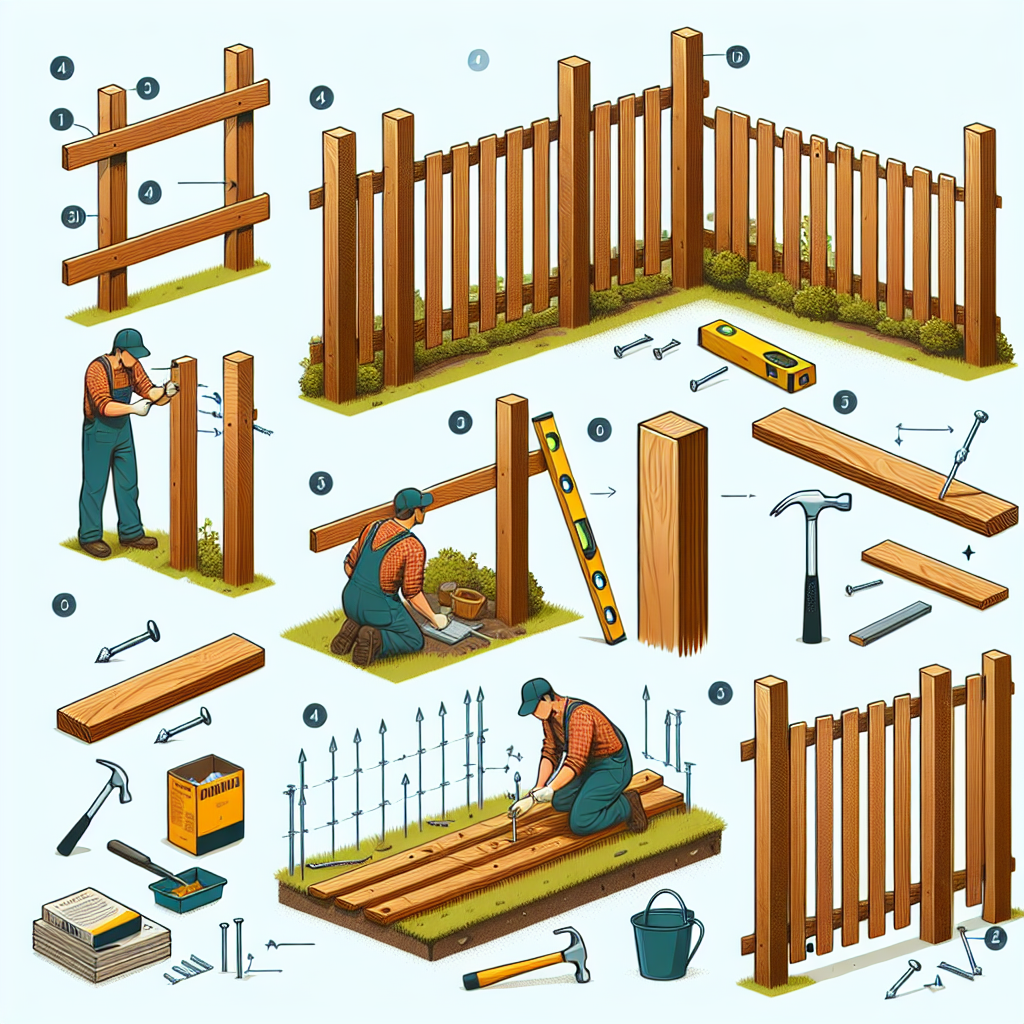
How to build a horizontal fence
How to Build a Horizontal Fence: A Comprehensive Guide
Building a fence around your property not only enhances its aesthetic appeal but also adds an element of privacy and security. Among the various fence styles available, the horizontal fence stands out due to its contemporary look. If you’re interested in learning how to build a horizontal fence, you’ve come to the right place. This guide will walk you through each step of the process, including planning, materials, construction, and finishing touches.
Benefits of a Horizontal Fence
Before diving into the construction details, let’s discuss why you might choose a horizontal fence over traditional styles:
- Modern Aesthetic: The sleek lines of a horizontal fence provide a contemporary feel.
- Versatile Design: These fences can be made from various materials and painted in multiple colors to match your property.
- Enhanced Privacy: When done right, horizontal slats offer excellent privacy without compromising on airflow.
- Lower Maintenance: Depending on the materials used, horizontal fences can be easier to maintain than vertical counterparts.
Planning Your Horizontal Fence
Proper planning is crucial to ensure a successful fence-building project. Consider these steps:
- Check Local Regulations: Before you start, check with local building codes or homeowners associations regarding fence regulations.
- Measure Your Property: Determine the length of the fence you want to build and mark the corners with stakes.
- Decide on the Height: Horizontal fences can vary in height. Make sure your chosen height complies with local guidelines.
- Choose Your Materials: Decide on the type of wood or alternative materials you wish to use. Common choices include cedar, treated pine, or composite materials.
Materials Needed for Building a Horizontal Fence
With your plans in place, gather the necessary materials. Here's a basic list:
- Fence boards (horizontal slats)
- Posts (typically 4x4 inches)
- Concrete mix for post footing
- Wood screws or nails
- Wood stain or sealant (optional)
- Tools such as a circular saw, measuring tape, level, and hammer
Step-by-Step Guide on How to Build a Horizontal Fence
Step 1: Prepare the Site
Begin by clearing the area where the fence will go. Remove any vegetation, rocks, or debris to have a clean working space.
Step 2: Mark the Layout
Stretch a string between the stakes marking your property line to have a clear visual reference. This will help ensure you maintain a straight line when installing the posts.
Step 3: Dig Post Holes
Use a post hole digger to create holes for your fence posts. A general rule of thumb is to dig holes that are one-third the height of the post.
Step 4: Set the Posts
Place the posts in their respective holes, ensuring they are level. Use a concrete mix to secure them in place, allowing the concrete to cure as per package instructions.
Step 5: Cut and Attach Horizontal Slats
Measure and cut the horizontal slats to your desired length. Start from the bottom and work your way up, securely attaching each slat to the posts using wood screws or nails. Ensure equal spacing for aesthetic appeal and airflow.
Step 6: Add Finishing Touches
Once all slats are attached, you may want to sand any rough edges. If you've opted for staining or sealing, apply it after sanding to protect your fence from the elements.
Step 7: Clean Up
After the fence has been erected, thoroughly clean up the site, removing any excess materials, tools, and debris.
Maintenance Tips for Your Horizontal Fence
Once your horizontal fence is complete, it's important to keep it in good condition. Here are some maintenance tips:
- Inspect regularly for damage or rot, especially if you used wood materials.
- Clean the surface of the fence, especially in areas prone to mold or mildew.
- Reapply the stain or sealant every few years to maintain protection.
- Trim any surrounding foliage that may touch the fence to prevent decay.
Common Mistakes to Avoid
Building a fence can come with its challenges. Avoid these common mistakes to ensure your project is successful:
- Not checking local regulations can lead to fines or mandates to remove your fence.
- Skipping the leveling of posts can result in an unprofessional appearance.
- Using insufficiently treated wood may lead to premature rotting or warping.
- Neglecting to plan for drainage can result in pooling water around the posts.
Conclusion
In conclusion, building a horizontal fence can be a rewarding project that enhances your property's beauty and functionality. By following these steps and keeping in mind the benefits and potential challenges, you'll be well-equipped to tackle the job yourself. Whether you seek privacy, style, or security, a well-constructed horizontal fence will add value to your outdoor space.
"Taking the time to plan and execute your fence project can result in a stunning addition to your home that lasts for years."
If you’re ready to build, gather your materials, follow these guidelines, and enjoy the process of creating a beautiful fence that suits your home’s unique character. Good luck!
```By Guest, Published on September 22nd, 2024